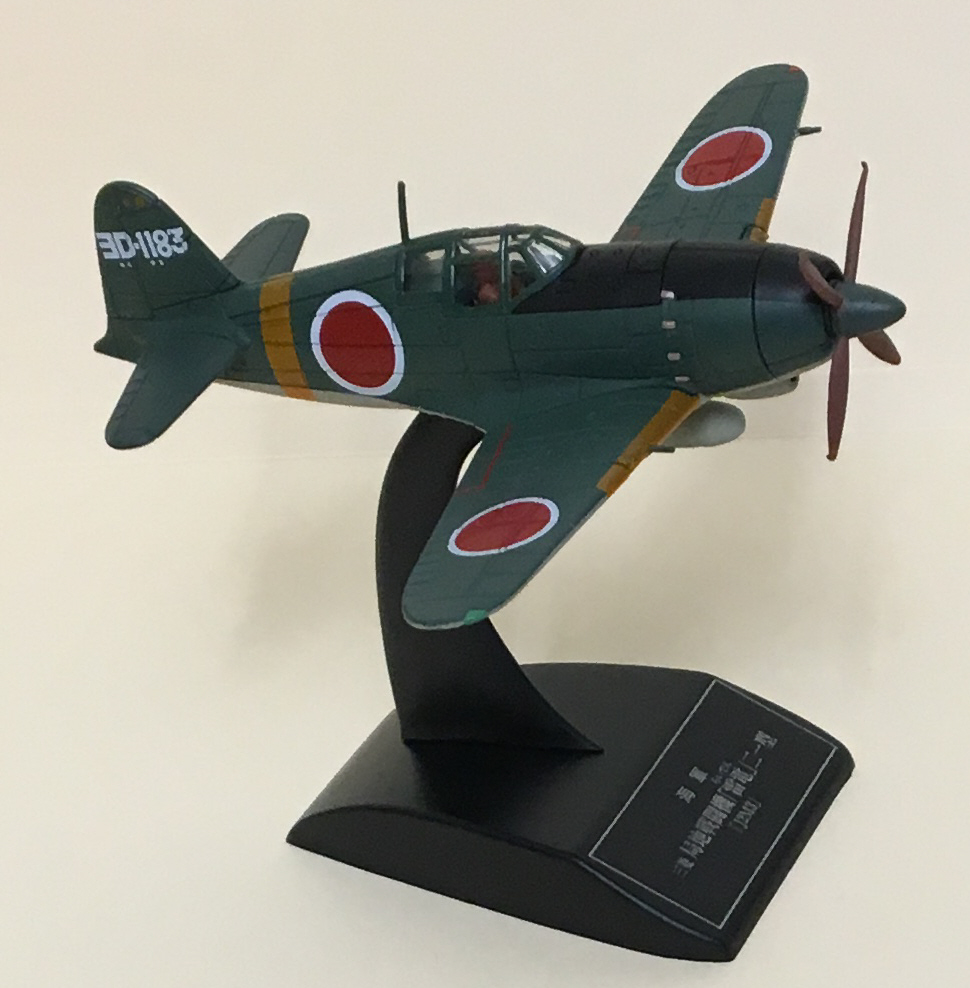FACTOIDS & TRIVIA
The Imperial Japanese Army had the Nakajima Ki-44 Shoki as their
defensive interceptor to attack
Allied bombers and the Navy wanted one, too. Unfortunately, the
aircraft they got, the Mitsubishi J2M Raiden (allied code name "Jack")
had a lot of problems right from the start. The engine was buried deep
in the fuselage and was prone to overheating (a fan was added to assist
with cooling) and it had neither the top speed nor the climb rate of
the Nakajima. The early version (J2M2) had two .303 inch machine guns
in fuselage with a pair of 20 mm cannon in the wings, but the guns were
swapped for another pair of cannon with the J2M3 shown here. It was
also fitted with hard points that could carry a pair of small bombs or
drop tanks. The engine problems delayed its introduction until
early 1944 meaning it was yet another example of "too little, too
late". But it wasn't a terrible design as the Americans discovered when
they flew a captured Raiden using good quality aviation fuel (something
the Japanese lacked) and discovered it had a top speed of 417 mph!
Mitsubishi only made a total of 543 J2M
aircraft with production being affecting by Allied bombing raids on
Mitsubishi's factories in 1944. You can see some wartime footage of the
J2M in a 4 minute YouTube video (fast forward as needed).
MITSUBISHI J2M3 Raiden "Jack"

Class: Fighter/Interceptor
Crew: 1
Engine: Mitsubishi MK4R-A Kasei 23a 14-cylinder
radial (1.800 hp)
Max Speed: 365 mph at 17,388 ft
Climb Rate: 3,150 ft/min
Service Ceiling: 38,400 ft
Range:
1,179 miles
Armament: 4 x 20 mm cannon
(wing mount)
2 x 132 lb bombs
Model Scale:
1:87
Back
to the Japanese
Combat Aircraft of WWII
Menu

